King Eiders are odd-looking seagoing ducks with abnormally tall bills, or beaks. Even females, which lack the bright colors of their male counterparts, have strangely tall beaks. In males, this effect is more drastic, and their colors are quite dramatic.
You can spot these strange-looking birds along the coasts of the North American arctic and eastern Russia. Read on to learn about the King Eider.
Description of the King Eider
Besides their strangely wide beaks, female King Eiders are relatively unremarkable. However, this is a good thing for them! While incubating eggs, no duck wants predators to see them easily.
Males are drastically more colorful, particularly on their faces. The widest part of the male’s bill, where it attaches to the rest of his head, is bright orange. Portions of his face is also green and light blue. Both males and females are about two feet long, and weigh nearly five pounds.
Interesting Facts About the King Eider
These ducks are undeniably interesting to look at, but they are more than a pretty face. Learn what makes King Eiders so unique below.
- Why So Dull? – Female waterfowl, and female birds in general, tend to be much less brightly colored than their male counterparts. This is incredibly important, because females must remain unseen while incubating eggs. An easily spotted sitting duck makes for easy prey.
- Hiding in Plain Sight – Using their camouflage coloration, female eiders attempt to hide from predators by remaining still. If they do not move, it is very difficult to spot a female eider on her nest. When they detect a threat, they flatten their heads to the ground and attempt to remain as still as possible.
- Dedicated Mother – King eider mothers take parental dedication to the extreme. Without a male to bring her food, females must go forage on their own, or face starvation. Sometimes the females go as long as a week without eating to protect their eggs from predators.
- Extreme Foraging – When they finally do go searching for food, King Eiders are expert divers. Instead of foraging for prey in the shallows, these ducks dive to the depths in search of food. A hungry duck sometimes dives as far as 80 ft. beneath the surface in search of food!
Habitat of the King Eider
This duck species lives along coastlines and forages for food in the ocean. Though they live in arctic regions, they usually remain in areas without sea ice. They nest on land, and prefer areas close to the water.
Their favorite nesting habitats are islands, marshes, and on the tundra. While they can dive relatively deep, because they forage on the sea floor it is important for them to live in shallow regions near the coast.
Distribution of the King Eider
King Eiders inhabit arctic regions in northern North America and eastern Russia. Like most waterfowl, they undergo migration seasonally, and spend their winters in areas slightly south of their breeding grounds.
Wintering birds range as far south as the northeast United States on the east coast, and southern Alaska on the west coast. They breed mostly in northern Canada and eastern Russia.
Diet of the King Eider
This duck species forages along the sea floor in search of food. The vast majority of their diet consists of worms, clams, mussels, snails, and other mollusks. They also feed on crabs, shrimp, sea stars, sea urchins, small fish, and more.
Males are carnivorous, but females are omnivores. While nesting, females feed on a variety of small plants, as well as bees, wasps, flies, and other insects.
Lemmings and the King Eider
Though this species of duck does not directly interact with lemmings, their fates are definitely intertwined. No, not in a “pre-planned” destiny kind of way, more like a “what’s for dinner” kind of way. You see, lemmings are an absolutely favorite food for many arctic predators.
When lemmings are plentiful, the predators eat their fill, and don’t care to take extra time searching for and eating ducks. Thus, as lemming populations increase, the number of King Eider chicks that survive increases as well.
King Eider and Human Interaction
As is the case with most waterfowl, humans hunt King Eiders. Native people in Arctic regions also hunt these birds, but for sustenance instead of sport. Though the IUCN lists this species as Least Concern, there are several threats that could pose a problem if left unchecked.
While their population numbers are high, they are on the decline. Habitat destruction by oil and gas companies is destroying vital nesting habitat, not to mention the destruction of oil spills, and boat traffic is problematic for molting birds spending their time at sea.
Domestication
Humans have not domesticated King Eiders in any way.
Does the King Eider Make a Good Pet
No, this species does not make a good pet. They are wild, seagoing birds, with special dietary needs. In many places, it is also illegal to own a King Eider as a pet.
King Eider Care
In zoos, these birds fare best in colder temperatures with temperature regulated saltwater pools. Because of this, they are not as common in zoos as some other waterfowl species. The water in their enclosure must be deep enough for them to dive and forage naturally.
Zookeepers feed them a variety of small fish, shrimp, squid, crabs, and shellfish. Most zoos also keep them with other cold-water bird species, like puffins and other species of eiders.
Behavior of the King Eider
Outside of breeding season, these ducks are quite social and live in large groups. They spend most of their time at sea, and rarely come to land unless they are nesting. Most activity and foraging occur during the day, and they sleep at night, making them diurnal.
While they are migrating, flocks of King Eiders sometimes have several thousand birds. Once they reach their breeding ground, pairs form and they do not associate closely with other pairs.
Reproduction of the King Eider
Male courtship includes lots of head bobbing, wing flapping, chasing, calling, and stretching. If he impresses the female, the pair will mate. Males leave shortly after the female lays her eggs, and the females take all responsibility for rearing the ducklings.
They lay an average of five eggs, which they incubate for a little over three weeks. The ducklings mature quickly, and begin to fly when they are a little over three weeks old.

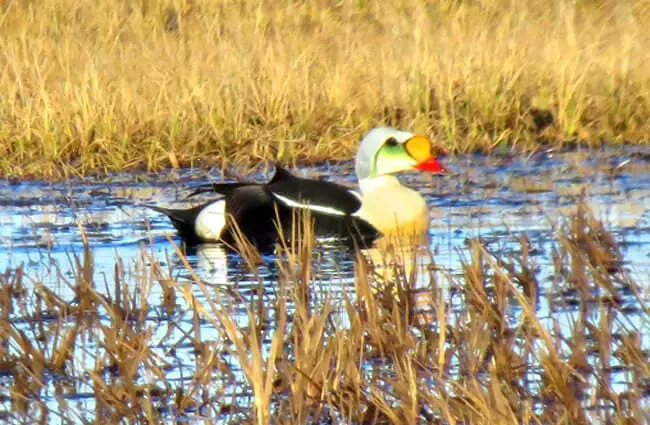
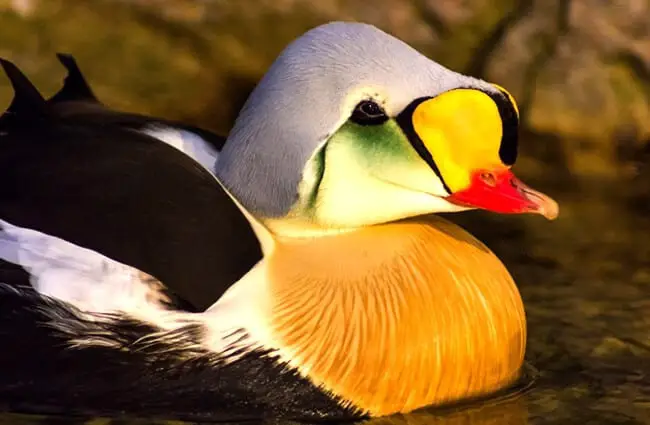
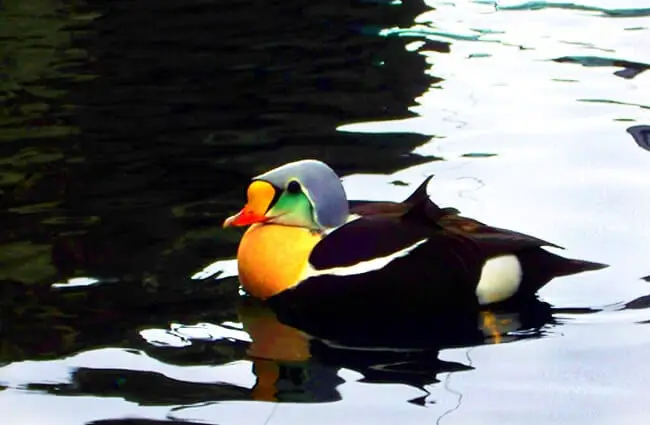

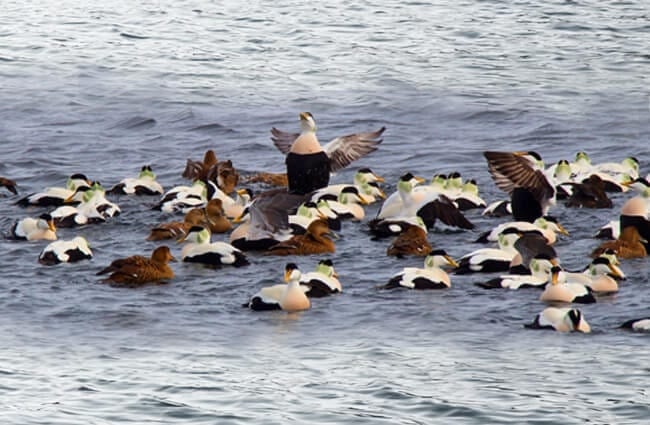
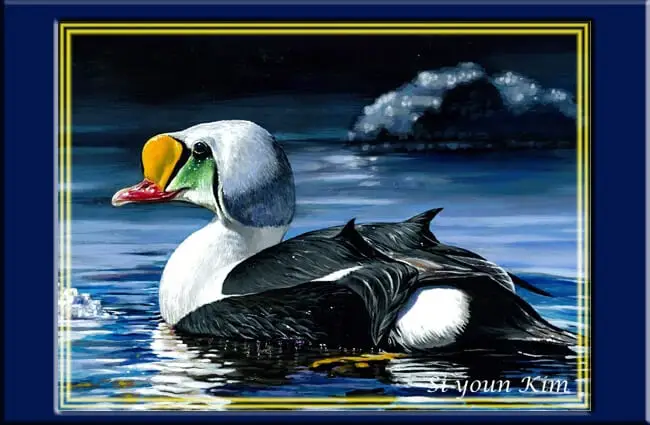
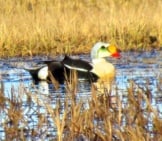


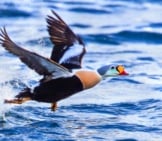
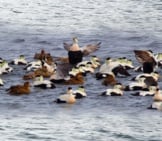

![Red Angus Closeup of a beautiful Red Angus cowPhoto by: U.S. Department of Agriculture [pubic domain]https://creativecommons.org/licenses/by/2.0/](https://animals.net/wp-content/uploads/2020/03/Red-Angus-4-238x178.jpg)












![Red Angus Closeup of a beautiful Red Angus cowPhoto by: U.S. Department of Agriculture [pubic domain]https://creativecommons.org/licenses/by/2.0/](https://animals.net/wp-content/uploads/2020/03/Red-Angus-4-100x75.jpg)

